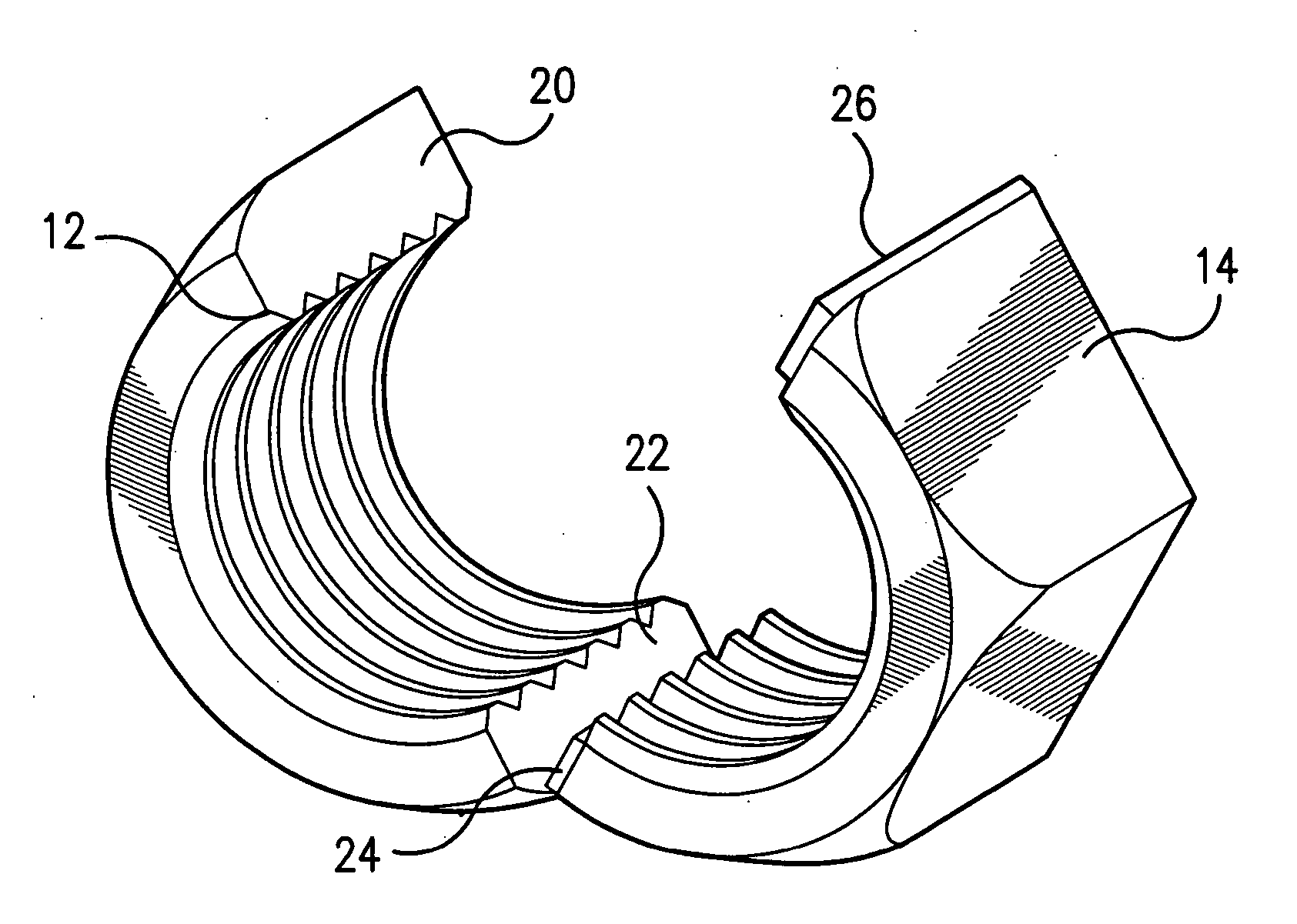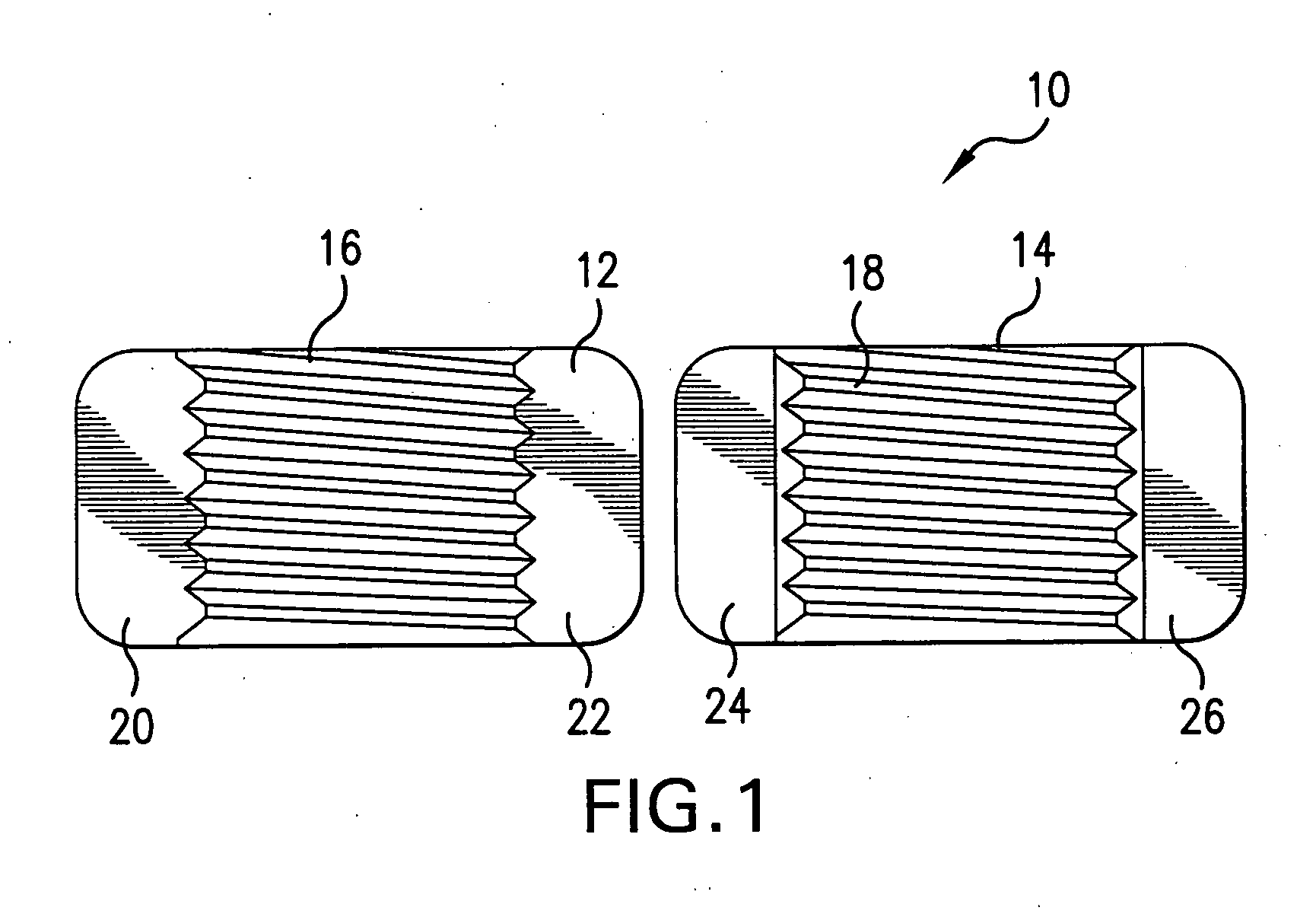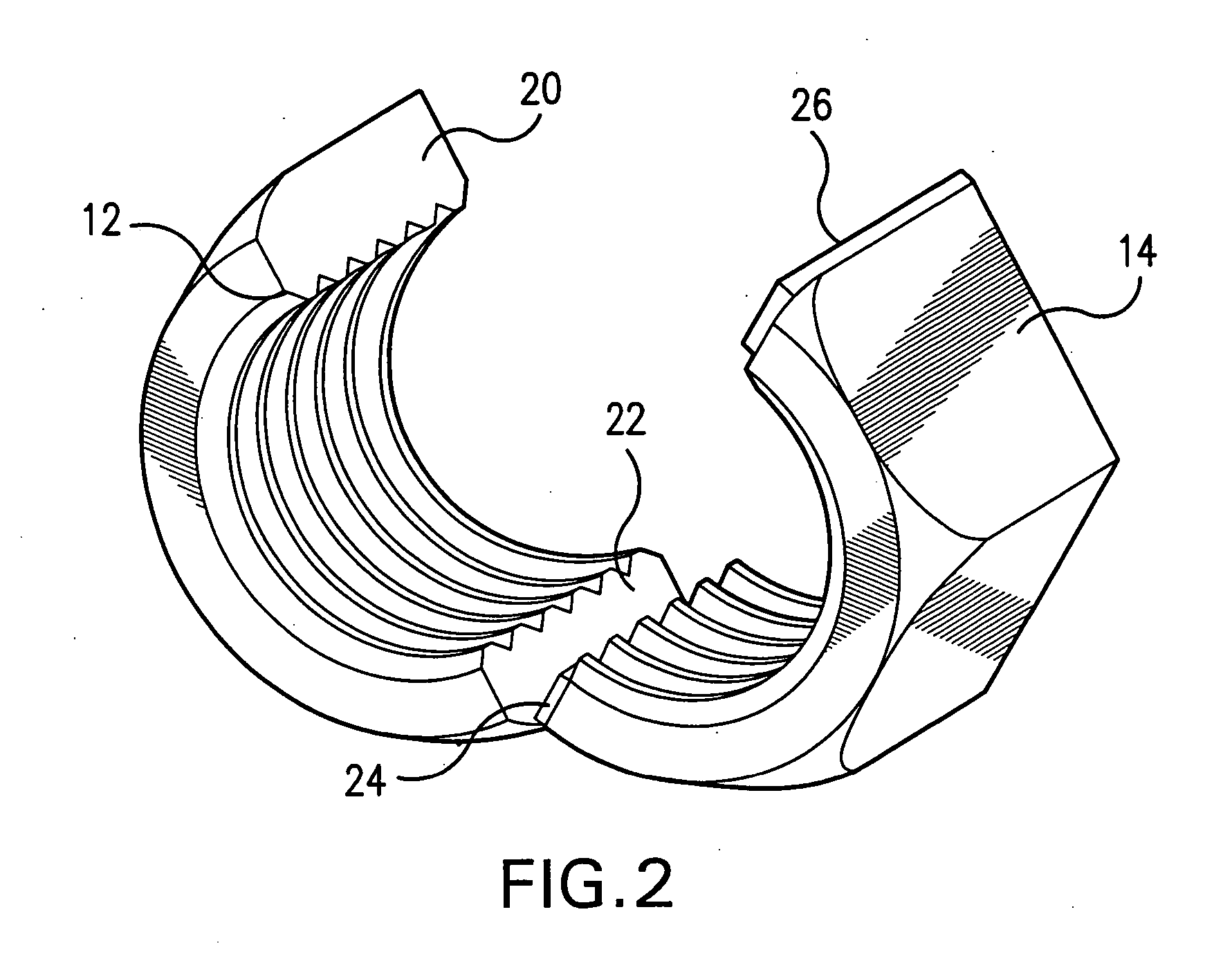Split nut with magnetic coupling
- Summary
- Abstract
- Description
- Claims
- Application Information
AI Technical Summary
Benefits of technology
Problems solved by technology
Method used
Image
Examples
Embodiment Construction
[0009] In FIG. 1, the split nut 10 is seen as having a first half 12 and second half 14. The nut maybe made of any material, such as steel or plastic. The first half has end faces 20, 22 and an inner surface with threads 16. The second half 14 has end faces 24, 26, each provided with a magnet. The magnets are secured to the end face in any conventional manner, such as with adhesive. The inner surface of the second half 14 has threads 18. The threads may be any type and chosen based on the application of the nut.
[0010]FIG. 2 shows the two halves with the first magnet 24 in alignment with the end face 22 and the second magnet 26 still having to be brought into contact with the end face 20. With the halves being separable but easily joined, the nut can be placed about a threaded shaft without having to start the nut at the end of the shaft and rotating it to its desired position. The nut halves placed about a bolt is readily seen in FIG. 3. In place of the magnet, the region about the...
PUM
 Login to View More
Login to View More Abstract
Description
Claims
Application Information
 Login to View More
Login to View More - R&D
- Intellectual Property
- Life Sciences
- Materials
- Tech Scout
- Unparalleled Data Quality
- Higher Quality Content
- 60% Fewer Hallucinations
Browse by: Latest US Patents, China's latest patents, Technical Efficacy Thesaurus, Application Domain, Technology Topic, Popular Technical Reports.
© 2025 PatSnap. All rights reserved.Legal|Privacy policy|Modern Slavery Act Transparency Statement|Sitemap|About US| Contact US: help@patsnap.com



